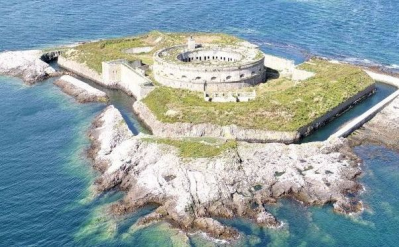
Shipyard Historic Heritage 2025 MODEL DATA SHEET
available from age 18 Between archaeological activities, woodworking and blacksmithing, take part in the maintenance and animation of the Ducal Tower of Siedlęcin, a medieval tower in south-west...
The aim of the Association les Amis de l'Ile du Large Saint-Marcouf is to restore the buildings and reopen to the public the Ile du Large, which is currently off-limits and state property. This island, in the heart of the eastern English Channel in the Cotentin region, was fortified by Napoleon I and later reinforced by Napoleon III. It houses an exceptional set of fortifications around a casemated tower unique in France. The island is surrounded by a moat cut into the rock and masonry dikes. These dikes are the main focus of the work. No longer maintained for over 50 years, they have been severely damaged by time and storms. But regular action by the association over the past 10 years has saved them, and enabled the reconstruction of missing parts such as the fort's large dike and other structures.
Every year since 2009, the association has worked during its authorized period, from August to October, as the months of April to July are currently reserved for nesting colonies of gulls and cormorants. Restoration and consolidation work on the dikes and other structures is carried out by volunteers and private companies. An overall plan has been drawn up by an architect in conjunction with the French government, prioritizing the work to be carried out. The association relies on experts from various trades to define the work that can be carried out, then negotiates the authorization to carry it out, and finally organizes its implementation according to the technical skills required.
The work carried out on the island by volunteers mainly uses lime technology, a technique that is virtually exclusive to the construction of dikes and buildings on the island. During worksites, a works supervisor is in charge of transmitting the techniques required for the various operations involved, including preparation and dosage, preparation of supports, choice of stones, trimming if necessary, application of lime, smoothing of joints, and so on. Other types of operation are also carried out, as required, including clearing stones from demolished buildings, cleaning vegetated areas and various ancillary works.